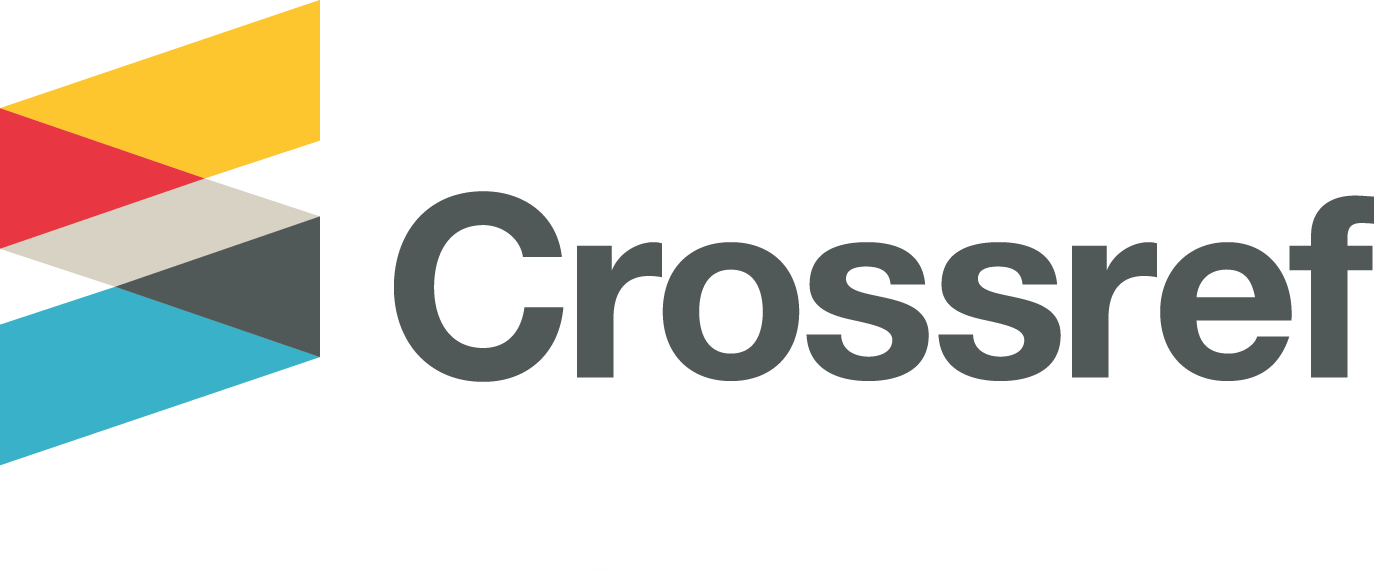Application of Cognitive Behavior Therapy (CBT) in the Treatment of Patients with Substance Induced Psychotic Disorder (SIPD)
Abstract
Many people in Indonesia still use drugs with an estimated 4,8 million people from the entire population, and an increase of 0,15% compared to 2019. The type of drug that is often used is marijuana because it is relatively easy to obtain. Prolonged drug use can cause side effects, one of which is Substance Induce Psychotic Disorder (SIPD). Cognitive Behavior Therapy (CBT) is often given to treat psychosis so that the application of CBT to SIPD has a positive hypothesis. The aim of this study was to intervene in one of the patients with substance-induced psychotic disorder (SIPD). CBT was given to a 34-year-old patient of psychiatric hospital who suffered from SIPD due to prolonged consumption of marijuana. Researchers provide intervention in the form of Cognitive Behavior Therapy (CBT) with the aim of changing a weak belief system regarding the behavior of taking medication. The research method used in the research is qualitative case study research. CBT is effectively used as a therapeutic tool in shaping the subject’s negative thought patterns and behavior into more positive ones and can develop the subject’s potential. CBT can increase awareness of taking medication in SIPD patients. However, psychoeducation and additional interventions need to be provided, especially when the patient has returned home.
Indonesia menghadapi tantangan besar dalam hal penggunaan narkoba. Diperkirakan 4,8 juta penduduk menggunakan narkoba, dan angka ini meningkat sebanyak 0,15% dibandingkan dengan tahun 2019. Jenis narkoba yang paling umum digunakan adalah ganja hal tersebut dikarenakan ganja relatif mudah didapatkan. Penggunaan narkoba dalam jangka panjang dapat menyebabkan berbagai efek samping, salah satunya yaitu gangguan Substance Induced Psychotic Disorder (SIPD). Terapi Cognitive Behavior Therapy (CBT) terbukti efektif dalam mengobati psikosis, sehingga penelitian ini bertujuan untuk menyelidiki penerapannya pada pasien Substance Induced Psychotic Disorder (SIPD). CBT diberikan pada pasien RSJ berusia 34 tahun yang mengidap SIPD akibat konsumsi ganja secara berkepanjangan. CBT secara khusus menargetkan keyakinan negative terkait kepatuhan terhadap pengobatan. Peneliti menggunakan pendekatan studi kasus kualitatif untuk menganalisis pengalaman pasien dengan CBT. CBT efektif dalam mengubah pola pikir dan perilaku negative pasien terkait dengan pengobatan. Dengan menumbuhkan pola pikir yang positif, CBT berkontribusi pada potensi pemulihan pasien. Penelitian ini juga menyoroti kebutuhan penting akan intervensi tambahan, seperti psikoedukasi, terutama setelah pasien keluar dari rumah sakit, untuk memastikan keberhasilan jangka panjang. Hasil dari penelitian ini menunjukkan bahwa Cognitive Behavior Therapy (CBT) efektif digunakan sebagai sarana terapi dalam pembentukan pola pikir dan perilaku subjek yang negatif menjadi lebih positif serta dapat mengembangkan potensi Subjek.
Keywords
Full Text:
FULL TEXTReferences
Addington, J., & Addington, D. (2007). Patterns, Predictors and impact of substance use in early psychosis: A longitudinal study. Acta Psychiatrica Scandinavica, 115(4), 304–309.
Allebeck, P., Adamsson, C., Engstrom, A., & Rydberg, U. (1993). Cannabis and Schizophrenia: a longitudinal study of cases treated in Stockholm County. Acta Psychiatrica Scandinavica, 88(1), 21–24.
American Psychological Association. (2023). APA Dictionary of Psychology.
Anggara, A. (2018). Gambaran Resiliensi Seorang Ibu yang Memiliki Anak Dewasa Skizoprenia. Psikoborneo: Jurnal Ilmiah Psikologi, 6(2), 165–173. https://doi.org/10.30872/psikoborneo.v6i2.4554
Badcock, J. C., & Paulik, G. (2020). A Clinical Introduction to Psychosis (T. Bennet (ed.)). Academic Press.
Baker, A., Bucci, S., Lewin, T. J., Kay-Lambkin, F., Constable, P. M., & Carr, V. J. (2006). Cognitive-behavioural therapy for substance use disorders in people with psychotic disorders: Randomised controlled trial. British Journal of Psychiatry, 188(MAY), 439–448. https://doi.org/10.1192/bjp.188.5.439
Baker, A., Lee, N. K., Claire, M., & Al, E. (2005). Brief Cognitive-Behavioural Interventions for Regular Amphetamine Users: a Step in the Right Direction. Addiction, 100, 367–378.
Beck, J. S., & Beck, A. T. (2011). Cognitive Behavior Therapy Basics and Beyond (Second Edi). The Guilford Press.
Bustillo, J. R., Lauriello, J., Horan, W. P., & Keith, S. J. (2001). The psychosocial treatment of schizophrenia: An update. American Journal of Psychiatry, 158(2), 163–175. https://doi.org/10.1176/appi.ajp.158.2.163
Caturini, E., Siti, S., Kementerian, H., Politeknik, K., Surakarta, K., & Keperawatan, J. (2014). Pengaruh Cognitive Behavioral Therapy (Cbt) Terhadap Perubahan Kecemasan, Mekanisme Koping, Harga Diri Pada Pasien Gangguan Jiwa Dengan Skizofrenia Di Rsjd Surakarta. 41–50.
Chung, N., Rifayanti, R., & Suhesty, A. (2022). Bagaimana Kaitan Kecemasan Komunikasi Pada Korban Perundungan dengan Dukungan Sosial. Psikoborneo: Jurnal Ilmiah Psikologi, 10(4), 578. https://doi.org/10.30872/psikoborneo.v10i4.8454
Copeland, J., Swift, W., Roffman, R., & Al, E. (2001). A Randomized Controlled Trial of Brief Cognitive-Behavioral Intervention for Cannabis Use Disorder. Journal of Substance Abuse Treatment, 21, 55–64.
Frances, R. J. (1996). Schizophrenia and Substance Abuse. Psychiatric Annals, 26(8), 523.
Haddock, G., Barrowclough, C., Tarrier, N., & Al, E. (2003). Cognitive-Behavioural Therapy and Motivational Intervention for Schizophrenia and Substance Misuse: 18-month outcomes of a randomised controlled trial. Journal of Psychiatry, 183, 418–426.
Hides, L., Dawe, S., McKetin, R., Kavanagh, D. J., Young, R. M. D., Teesson, M., & Saunders, J. B. (2015). Primary and substance-induced psychotic disorders in methamphetamine users. Psychiatry Research, 226(1), 91–96. https://doi.org/10.1016/j.psychres.2014.11.077
Inchausti, L., Gorostiza, I., Gonzalez Torres, M. A., & Oraa, R. (2022). Diagnostic stability in substance-induced psychosis. Revista de Psiquiatría y Salud Mental (English Edition), 15(4), 272–280. https://doi.org/10.1016/j.rpsmen.2019.10.006
Iqbar, M., & Adriansyah, M. A. (2022). Hubungan Strategi Coping Dengan Kecemasan Pada Wabah Virus Corona di Kalangan Masyarakat yang Berada di Zona Merah. Psikoborneo: Jurnal Ilmiah Psikologi, 10(2), 294. https://doi.org/10.30872/psikoborneo.v10i2.7535
Kaplan, & Sadock. (2015). Synopsis of Psychiatry: Behavioral Sciences/Clinical/Psychiatri-Eleventh Edition (Eleventh).
King, L. A. (2016). The science of psychology 2: An appreciative view. McGraw-Hill Higher Education.
Murrie, B., Lappin, J., Large, M., & Sara, G. (2020). Transition of Substance-Induced, Brief, and Atypical Psychoses to Schizophrenia: A Systematic Review and Meta-Analysis. Schizophrenia Bulletin, 46, 505–516. https://doi.org/10.1093/schbul/sbz102.
Prochaska, J. O., & Norcross, J. C. (2018). Systems of Psychotherapy: A Transtheoretical Analysis. Oxford University Press.
Puslitdatin BNN. (2022). Indonesia Drugs Report 2022. In Jurnal SPORTIF : Jurnal Penelitian Pembelajaran (Vol. 2, Issue 6).
Sari, P. (2019). Dinamika Psikologi Penderita Skizofrenia yang Sering Mengalami Relapse. Psikoislamedia Jurnal Psikologi, 4(2), 124–139.
Ulyah, S., & Noviekayati, I. (2022). Efektivitas Cognitive Behavior Therapy (CBT) Dalam Penanganan Pasien Skizofrenia Paranoid. Jurnal Studia Insani, 10(1), 45–52. https://doi.org/10.18592/jsi.v10i1.4645
Wahyuningsih, S. (2013). Metode Penelitian Studi Kasus: Konsep, Teori Pendekatan Psikologi Komunikasi, dan Contoh Penelitiannya. UTM PRESS Bangkalan - Madura, 119.
Wilson, L., Szigeti, A., Kearney, A., & Clarke, M. (2018). Clinical characteristics of primary psychotic disorders with concurrent substance abuse and substance-induced psychotic disorders: A systematic review. Schizophrenia Research, 197, 78–86. https://doi.org/10.1016/j.schres.2017.11.001
Winklbaur, B., Ebner, N., Sachs, G., Thau, K., & Fischer, G. (2006). Substance abuse in patients with schizophrenia. Dialogues in Clinical Neuroscience, 8(1), 37–43. https://doi.org/10.31887/dcns.2006.8.1/bwinklbaur
Yustiana, A. V., & Alit Aryani, L. N. (2019). Gangguan psikotik akibat penggunaan ganja (cannabis): studi kasus. Medicina, 50(2), 400–403. https://doi.org/10.15562/medicina.v50i2.123
DOI: http://dx.doi.org/10.30872/psikoborneo.v12i1.12951
Refbacks
- There are currently no refbacks.
Copyright (c) 2024 Shabrina Fitri Rahmadini & Ilham Nur Alfian

This work is licensed under a Creative Commons Attribution-ShareAlike 4.0 International License.
PSIKOBORNEO: Jurnal Ilmiah Psikologi Published by Faculty of Social and Political Siences, University of Mulawarman, Samarinda, East Kalimantan and This work is licensed under a Creative Commons Attribution-ShareAlike 4.0 International License.
________________________________________
PSIKOBORNEO: Jurnal Ilmiah Psikologi
Department of Psychology
Faculty of Social and Political Siences, University of Mulawarman
Jl. Muara Muntai Kampus Gn. Kelua Samarinda 75411
Phone: +62 813 35350368
E-Mail: psikoborneo@gmail.com / psikoborneo@fisip.unmul.ac.id
















